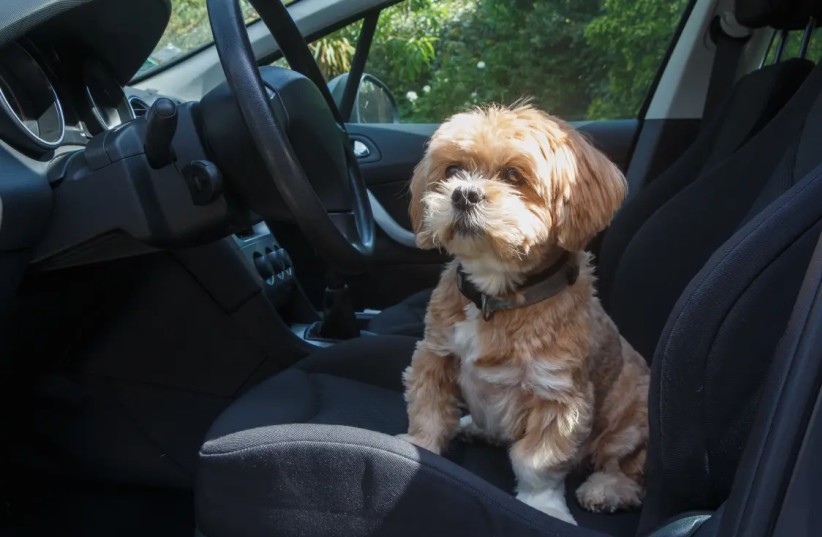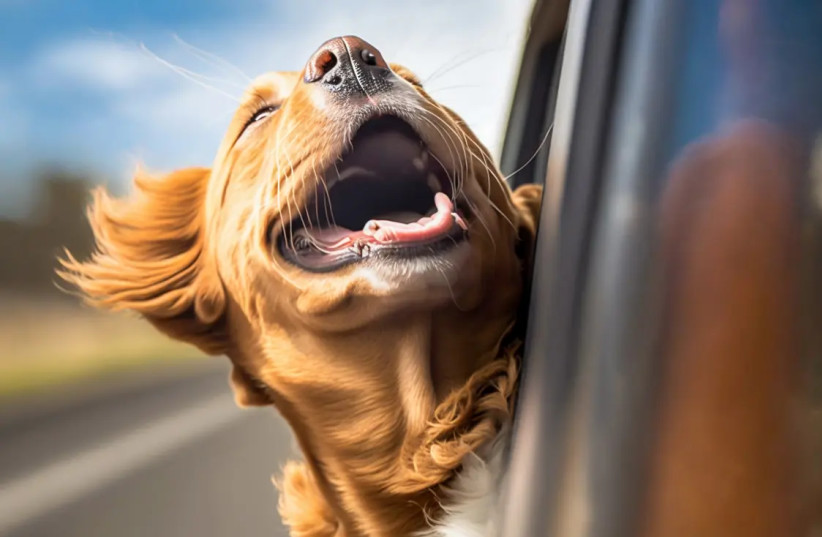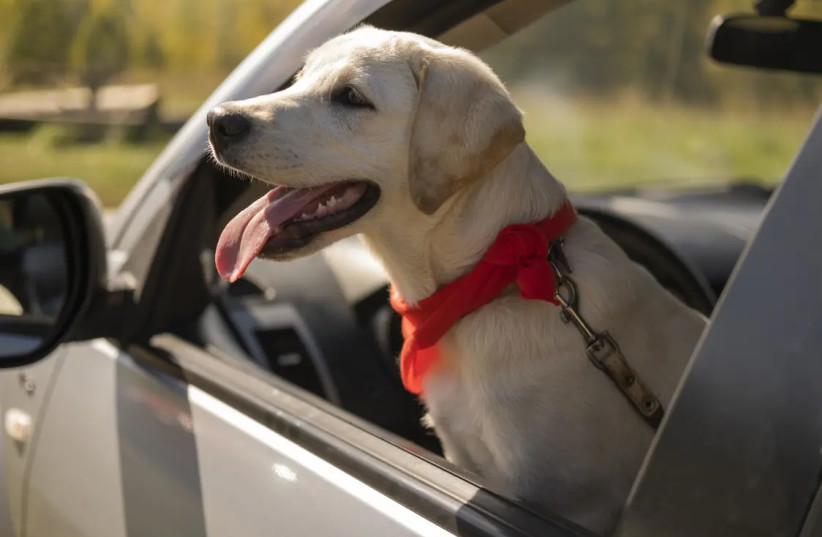While many dogs enjoy car rides and eagerly anticipate them, others experience fear, drooling, or even vomiting. The reasons for this can vary: Motion sickness, anxiety from being confined in a moving vehicle, past traumatic experiences with cars, and more.
During the summer, when you spend hours in the car on long trips, it is important to teach your dog how to ride in a car calmly and comfortably.
A safe and enjoyable car ride can strengthen the bond between you and your dog while creating positive experiences together.
Merav Gamliel Boshan, an Israeli dog trainer and behavioral therapist representing the company "Biopet," offers tips on how to help your dog and teach them to have a comfortable and calm car ride.
Introducing your dog to the car
Just like children need their toys and belongings when traveling, your dog also requires things too.
Bring along a toy they enjoy, a chew bone, and a comfortable blanket for them to lie on, ensuring they feel secure and at ease.
- Step 1: Stationary car. Let your dog explore a parked car without any movement or engine noise. Let them sit in the car and then observe their reactions. Encourage them with a happy and calm voice, gentle caresses, and tasty snacks at each stage.
It is generally recommended to avoid feeding your dog a meal before the trip to prevent nausea. However, you can offer small snacks if your dog happily accepts them.

- Step 2: Start your engines. Once your dog appears relaxed, close the doors, turn on the radio at a low volume, and start the engine. Let your dog experience the sensation of the car's engine running.
- Step 3: Light movements in the parking lot. If your dog remains calm, you can start slowly driving in the parking lot to observe how they react to the car's motion.
- Step 4: Go on a short drive. If the previous steps have been successful, take a short drive to a place your dog enjoys near your home, if possible.
Teaching your dog to enjoy the ride
Riding in the car can lead to wonderful places. Take frequent trips with your dog and gradually drive for longer and longer.

Choose destinations you know your dog will enjoy, such as a park, a loved one's house, a family member's place, or an open area to walk. If your dog only associates car rides with visits to the veterinarian or the groomer, they may develop a fear of car travel.
Always bring toys and snacks to make the ride enjoyable. Remember to praise your dog in a happy voice for remaining calm.
Before the drive, take a short walk to let your dog relieve themselves and release energy. This will help them stay calm and relaxed during the ride.
Safety above all
- Stops during the trip. Bring water and don't forget a collapsible or portable bowl. Take breaks during the trip to provide fresh air, give your dog water, and allow them to relieve themselves.
- Window. Occasionally let your dog to stick their head out of the window to enjoy the fresh air (which can also help with nausea). However, ensure the window isn't too open, so you can stop your dog from sticking their body out. Do not open the window when driving at high speeds, as strong wind gusts can harm your dog's eyes.

- Preventing sunburn in the summer. Just as humans can suffer from sunburn while driving, so can dogs. Protect your dog from the sun's rays as much as possible by using suitable shading and keeping the vehicle cool.
- Never leave your dog alone in the car, not even for a minute. During summer, a vehicle can heat up rapidly, becoming a death trap for your dog. In winter, leaving a dog alone in the car can lead to hypothermia, and in general, a dog left alone in the car may be at risk of being stolen. Just like with children, exercising caution and staying vigilant can prevent the worst.
- If you have a young puppy or a small dog, do not let them sit on your lap while driving. This can be extremely dangerous! In the event of an accident, the airbag can cause serious harm.
- Purchase a dedicated harness for transporting your dog in the car. A good harness serves as a safety belt, keeping the dog secure without exerting unnecessary pressure on their neck. It will protect them in case of sudden braking, collisions, or their desire to move around in the car.
